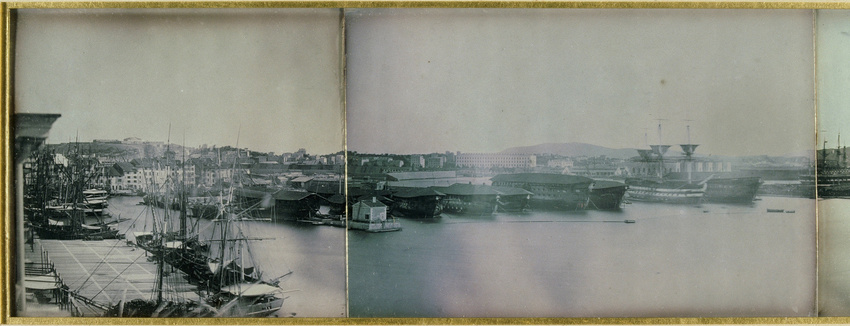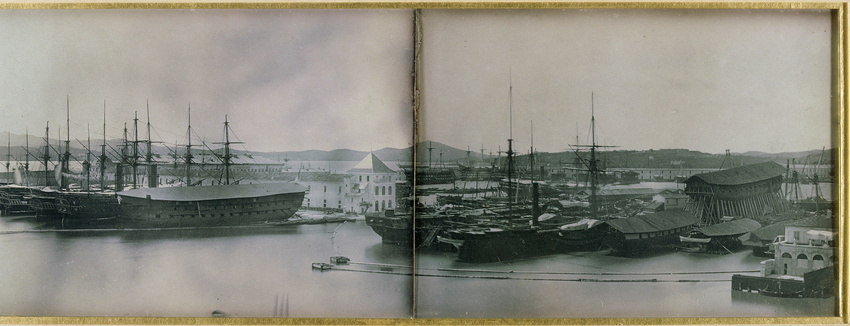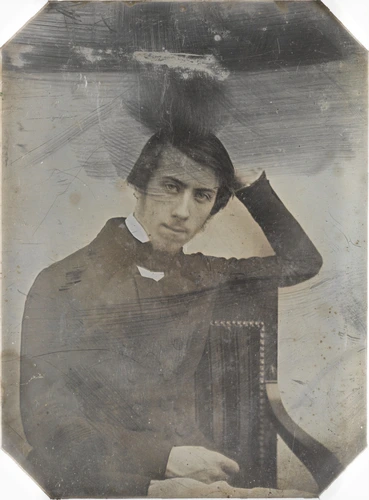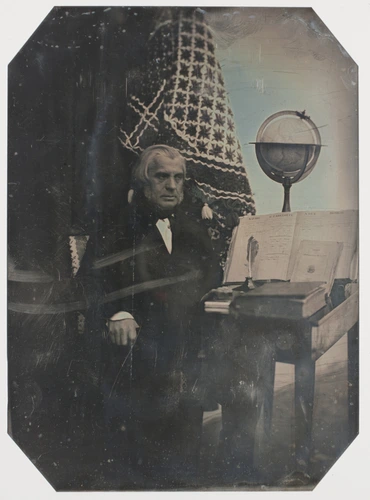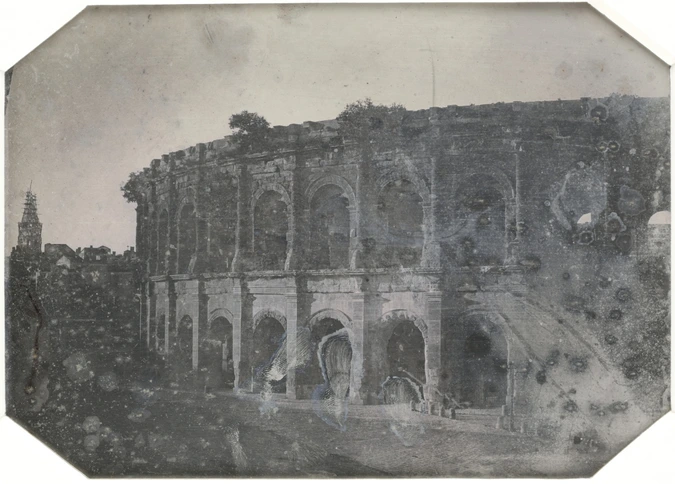La Rade de Toulon
Charles-Marie-Isidore Choiselat and Stanislas Ratel showed a very early interest in Daguerre's invention. The two men were fascinated by chemistry and alchemy and in February 1840, only five months after the process was made public, they tried to find ways to remedy the daguerreotype's deficiencies, particularly its singleness and slowness. The twenty or so surviving examples of their work display astonishing technical mastery. They are landscapes or views of buildings mostly taken in Paris, in the area around Grenoble and, as here, in the South of France about 1845.
Choiselat and Ratel were intrigued by panoramas. The Toulon Roadstead, composed of five plates covering an angle of almost 180°, is the most accomplished of the four that have come down to us. Moreover, it is the first known photograph of the roadstead. The execution of this outstanding view, in the 'lovely pinkish lilac tone' that was the hallmark of Choiselat and Ratel's work, was a technical achievement. The whole operation had to be repeated five times over with similar results in a relatively a short time. It was made even trickier because the sky and the sea, although of unequal brightness, had to be photographed with the same exposure time.
This panorama shows the port of Toulon a few years before it was enlarged. In 1852, the configuration of the roadstead was completely changed. A new belt of fortifications replaced the wall built by Vauban about 1680, which had become too restrictive.
For all these reasons, the panorama is an exceptional testimony to pioneer photography in France as well as a valuable historical document.


